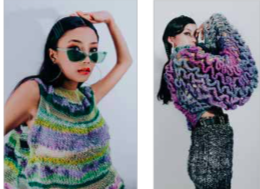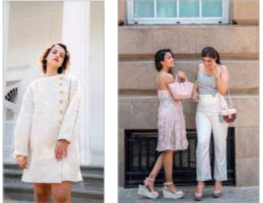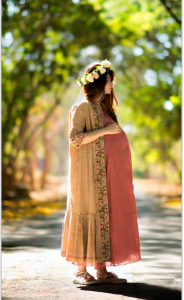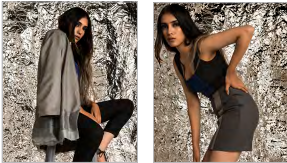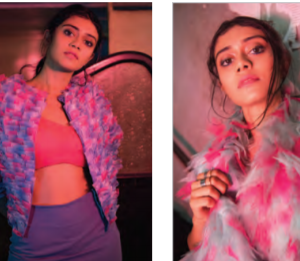Do you keep up with the latest trends in fashion? Did you know that some of the classic styles of the 90s are being reinvented in oversized and loud colors, along with activewear and streetwear styles? You read that right, it’s not a 2022 trend but a throwback to the 90s.
One of today’s fashion trends that hit celebs and commoners was crochet sets. While crochet sets are essential 70s fashion, they blew up with Harry Styles and his musical phenomenon “Watermelon Sugar” video! Another trend is the women’s bomber jackets. Don’t deny, you almost bought one or at least were enticed by it, cause been there done that!

However, are you curious about how the prediction of fashion trends comes about? People usually keep up with the latest fashion trends through fashion forecasting. Sounds interesting right? Let’s find out more!
What is Fashion Forecasting?
Fashion forecasting focuses on the process of projection of future fashion trends. Fashion forecasters observe and analyze social-cultural movements, projecting short, medium, and long-term impacts on the direction of fashion.
Forecasting fashion trends requires a mixture of intuition, research, and data to create a scenario which then gets communicated through writing and mood boards. The best part about fashion trends is that it plays an integral role in all aspects of fashion design – haute couture, ready-to-wear, mass market, and streetwear.
But fashion forecasting is not specific only to the fashion industry. It is integral in attracting consumers and helping business retailers and designers sell their brands. Understanding fashion trends is hence a necessary factor for businesses.
What are fashion trends?
Fashion trends include any styles or accessories which are gaining popularity. These include two types of trends in fashion:
-
Microtrends:
These are the trends that move in and out of fashion within a few months or years. For example, some popular micro fashion trends include tiny sunglasses, hair claw clips, and high-waisted denim.
-
Macrotrends:
These are trends that are global and long-lasting, materializing in fashion products and collections in some or other form. For example, one of the macro trends was online shopping during the lockdown, which will bring about significant changes in the technological advancement of many brands. Gucci experimenting with AR and microgaming technologies is one such brand.
Microtrends are gaining more prominence in today’s world, which can be attributed to the rise of social media channels. The increasing number of YouTube vloggers, Instagrammers, and TikTok creators are influencing the masses, which is also making the prediction of fashion trends difficult. Of course, when you study with us, you’ll realize how fashion is multifaceted, and how the increase of micro fashion trends is yet generating more clothing waste than before.
But first, let’s dive into understanding how fashion forecasting is done!
How is the forecasting of fashion trends done?
Fashion forecasting is taken up differently by various brands. For example, womenswear brands are more focused on micro trend analysis as compared to menswear brands. Usually, fashion forecasting also depends on the size of the company and its target market. But even though the process of fashion forecasting might be different, there are some reliable ways to bring about the prediction of fashion trends.
-
Research and Hunt
To predict the latest fashion trends, it’s important to pay attention to magazines, newspapers, and other sources of data. Trend experts search and document trends with time and it requires a mixture of intuition and research for fashion forecasting.
New developments in all the sectors like fashion, design, art, culture, color, consumer behavior, materials, architecture, science, business, and politics are monitored. You would need to keep on reviewing your key ideas, brainstorm, work on a mood board, delve into research more to study missing pieces, and streamline your research to deliver the essential messages.

-
Identify
The next step is to analyze the basis of these trends – are they micro or macro trends? Of course, identifying that will require you to segregate your research into key themes. Content, visuals, and facts need to be grouped into key concepts which will also include color group, product, concept, and fabric.
The groupings will give a good idea about your viewpoint and message, and if the findings are diverse, then an explanation can be derived for the same. Here, you’ll also run important fact checks and save credits for your content.
-
Gather
After you have identified the key trends, they need to be applied to design and product collections. This will show themselves in different products such as womenswear, sports, accessories, menswear, etc. with the detailed color tone, design, textiles, and graphics.
So you’ll be identifying which products one is focusing on, what problems are being solved, what is the season preference, whether there are any opportunities to differentiate, and so on. Any areas for innovation, the realization of key product categories, and identifying core items will become essential for you.
If researching about the latest fashion trends is something you are fond of, you can find yourself the best career in it! Fashion forecasters work with designers, manufacturers, retailers, trade groups, and trend analysis firms. By having a good knowledge about fashion, market research and consumer data, you’ll become one of the best fashion forecasters present in the industry.
Once you get into fashion forecasting you’ll realize how fun it is. Some useful areas to gather resources are magazines, news outlets, fashion shows, influencers (also known as “bottom-up” forecasting by closely monitoring the target market), and looking at other industries. Before getting into fashion forecasting, it will be necessary for you to get an idea about the fashion and design industry, for which we have the best resources!
How can ISDI help:
ISDI offers various design programs such as Strategic Design Management, Product Design Fashion Design, Fashion Communication and Styling, Interior Design and Strategic Design, Communication Design, and Management. Pursuing one of the degree programs, that is, Bachelors in Design (BDes) – 4-year program or Postgraduate In Design (PGDI) – 11 months program. Either of the programs is an alternative to a career in fashion and design.
The ISDI campus is located in the business district of Mumbai, the commercial center of India. ISDI consists of a curriculum that is based on that of the Parsons School of Design, experienced and industry-leading faculty, and practical project-based training, all situated on a state-of-the-art campus. ISDI is just the right place for someone looking to start a career in design.





